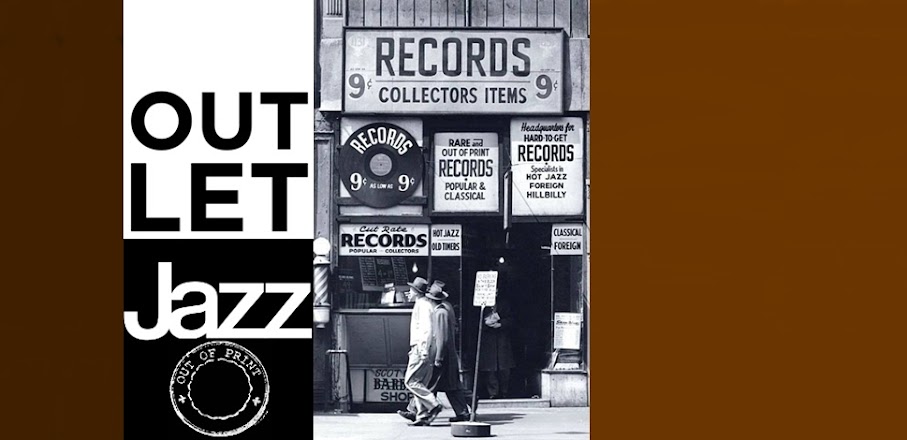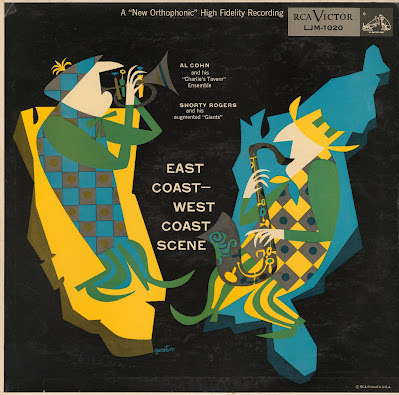Gerry Mulligan Quartet
Featuring Chet Baker
Mulligan's birthplace has been given as in many places. He was, however, born in a Catholic in Queens, New York, the fourth and youngest son of an industrial engineer. Before he was a year old his family had moved to Marion, Ohio, and when his schooling was over at the age of seventeen in Philadelphia, he had lived, in addition, to New Jersey, Chicago, Kalamazoo, Detroit and Reading. His first instrument was a ukulele. He also took piano lessons which were terminated rather suddenly after an overly hesitant recital. Following this, he learned the ocarina family, then the clarinet, although he had asked his father for a trumpet. When, in 1944, Mulligan left school, where he had led several bands, he went to work as an arranger for Tommy Tucker, turning out in the three months that he stayed a trunkful of material, some of which is still in use. He spent the next six months or so as an arranger and sometime tenor saxophonist with Elliot Lawrence, joined George Paxton, and eventually, for a year, Gene Krupa. During the next few years, he worked as a freelance writer and sideman around New York, made his first recordings, with Brew Moore and George Wallington (he had just taken up the baritone saxophone seriously), had various rehearsal bands, which occasionally practiced in Central Park because no one had money for a studio, and, shortly after the Miles Davis date, hitchhiked, over a period of months, with waystops at Reading and Albuquerque, to Lost Angeles, where he stayed more or less permanently until recent move east. On the West Coast he wrote for Kenton, and worked marathon twelve-hour gigs on Saturdays and Sundays at the Lighthouse, Hermosa Beach. In 1951 he landed a Tuesday night job at the Haig in Los Angeles, where he did some experimenting with a trio composed of guitar, his instrument and drums. Then, almost inadvertently, after he had met Chet Baker, he hit upon the instrumentation of the quartet and was recorded by Richard Bock of Pacific Jazz, the cream of which can be heard in this twelve reissues, recorded between 1952-53, that make up this record.
*Whitney Balliett (from the liner notes)*
A prize collection of recordings from the Quartet's 1952-53 phase, when Chet Baker was still blowing with Mulligan. The combo made history with their fresh sound and engaging style, blazing a trail that many since have attempted to follow. The delicately balanced sonorities of baritone sax and trumpet in seemingly effortless contrapuntal play was a new aural kick for which modern jazz audiences still have sharp appetites. Mulligan's own compositions and arrangements provide the group with the most congenial framework in which to display their talents and personalities. A must for all modern collectors, unless they have previously gotten some of them released on EP. *Billboard, September 3, 1955*
A full LP that collects together earlier recordings by Mulligan — done in the years 1952 and 1953, with a quartet that features Chet Baker, and bass by either Carson Smith or Bob Whitlock, and drums by either Larry Bunker or Chico Hamilton. Both Mulligan and Baker recorded together a number of times after this, in a "reunion" style that hearkened back to the fame of these sides — but the originals are still the best, and feature a magical pairing of two gentle jazz talents in a laidback piano-less setting. Titles include "Frenesi", "Swinghouse", "I May Be Wrong", "Tea For Two", and "Jeru". *Dusty Groove, Inc.*
Side 1
1 - Frenesi
(Dominguez, Whitcup)
2 - Nights At The Turntable
(Mulligan)
3 - Lullaby Of The Leaves
(Young, Patkere)
4 - Jeru
(Mulligan)
5 - Cherry
(Gillespie, Daniels)
6 - Swinghouse
(Mulligan)
Side 2
7 - I May Be Wrong
(De Lange, Van Heusen)
8 - Aren't You Glad You're You
(Burke, Van Heusen)
9 - I'm Beginning To See The Light
(Ellington , James, Hodges, George)
10 - The Nearness Of You
(Carmichael, Washington)
11 - Makin' Whoopee
(Kahn, Donaldson)
12 - Tea For Two / Gerry Mulligan Signing Off
(Youmans, Caesar / Mulligan)
#1, #2, #8:
Chet Baker (trumpet), Gerry Mulligan (baritone sax),
Bob Whitlock (bass), Chico Hamilton (drums).
Recorded at Gold Star Studios, Los Angeles, California, October 15 and 16, 1952
#3:
Chet Baker (trumpet), Gerry Mulligan (baritone sax),
Bob Whitlock (bass), Chico Hamilton (drums).
Recorded at Phil Turetsky's House, Los Angeles, California, August 16, 1952
#4, #6:
Chet Baker (trumpet), Gerry Mulligan (baritone sax),
Carson Smith (bass), Larry Bunker (drums).
Recorded at Radio Recorders, Los Angeles, California, April 27, 1953
#5, #11:
Chet Baker (trumpet), Gerry Mulligan (baritone sax),
Carson Smith (bass), Larry Bunker (drums).
Recorded at Gold Star Studios, Los Angeles, California, February 24, 1953
#7, #9, #10, #12:
Chet Baker (trumpet), Gerry Mulligan (baritone sax),
Carson Smith (bass), Larry Bunker (drums).
Recorded at Radio Recorders, Los Angeles, California, April 29 and 30, 1953
Note: about "Gerry Mulligan Signing Off"
The short songs that jazz groups in the 1950s often played to close their live performances are called "theme songs", "vamp tunes" or more specifically "out-choruses" or "set closers". These were short, recognizable melodies or riffs to close a concert, often upbeat and punchy, leaving the audience on a high note. These themes became identifiers for the band.
The final theme used by Gerry Mulligan's 1952~1953 quartet to close their live performances was a brief, signature piece titled "Gerry Mulligan Signing Off". This short tune, lasting approximately 20 seconds, served as a distinctive outro, signaling the end of their sets. ["Outro" is short for "outroduction", the opposite of "intro" (introduction)]




















